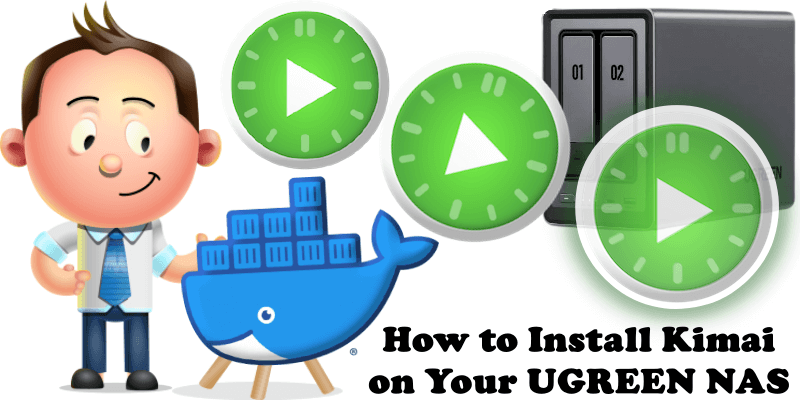
Kimai is a free, open source and online time-tracking software designed for small businesses and freelancers. It is built with modern technologies such as Symfony, Bootstrap, RESTful API, Doctrine, AdminLTE, Webpack, ES6 and many more. In this step by step guide I will show you how to install Kimai on your UGREEN NAS using Docker and Portainer.
This guide works perfectly with the latest Kimai v2.44.0 release.
STEP 1
Please Support My work by Making a Donation.
STEP 2
Install Portainer using my step by step guide. If you already have Portainer installed on your UGREEN NAS, skip this STEP. Attention: Make sure you have installed the latest Portainer version.
STEP 3
⚠️Mandatory: Enable HTTPS on your UGREEN NAS.
STEP 4
Create a new hostname on the noip website using your noip account. For example, I have created mariukim as Host and I use the free ddns.net domain. In the IP Address area, type in your own IPV4 IP address from your ISP, then click Create. Follow the instructions in the image below.
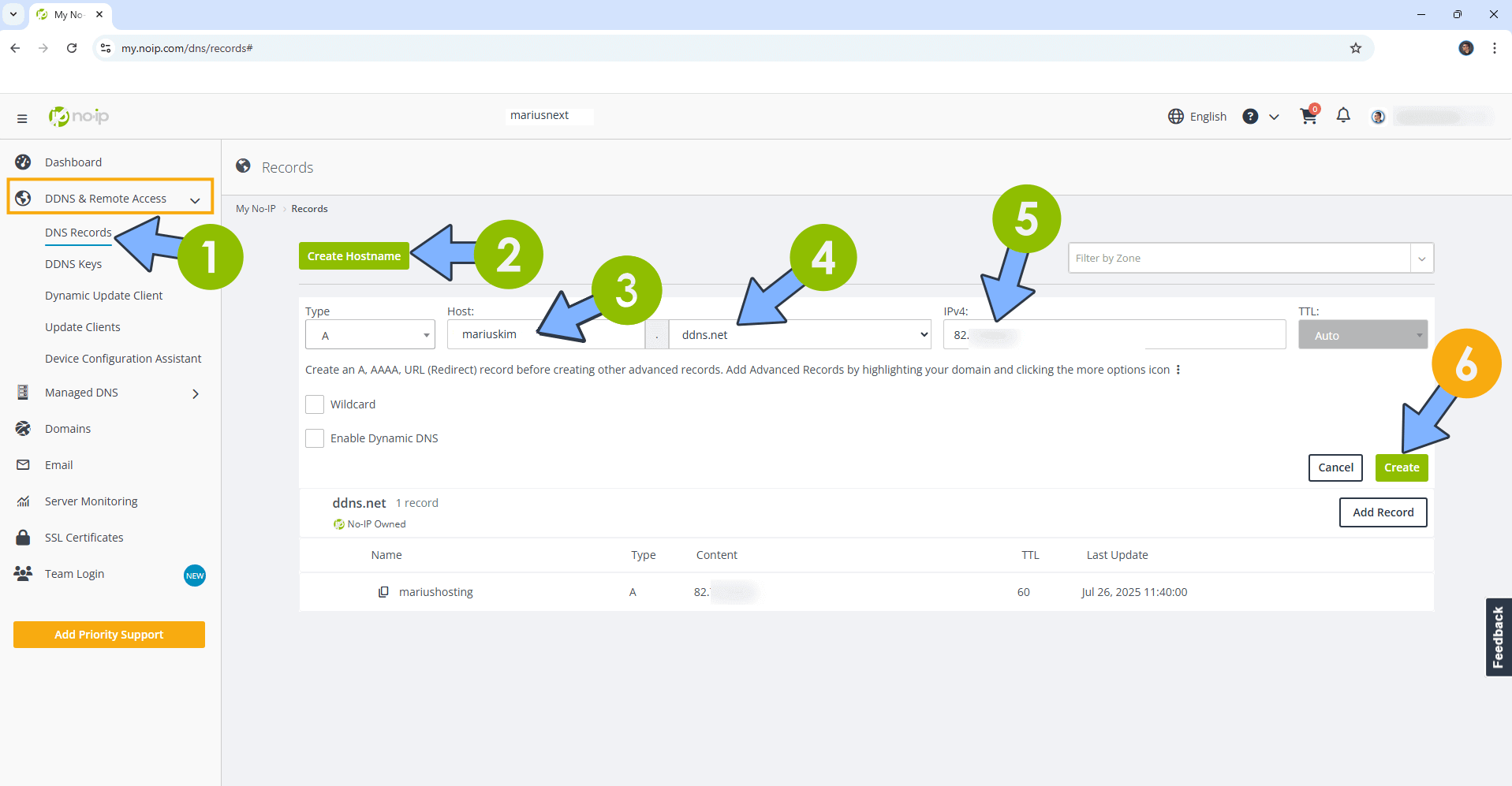
STEP 5
Go to Files and open the docker folder. Inside the docker folder, create one new folder and name it kimai. Follow the instructions in the image below.
Note: Be careful to enter only lowercase, not uppercase letters.
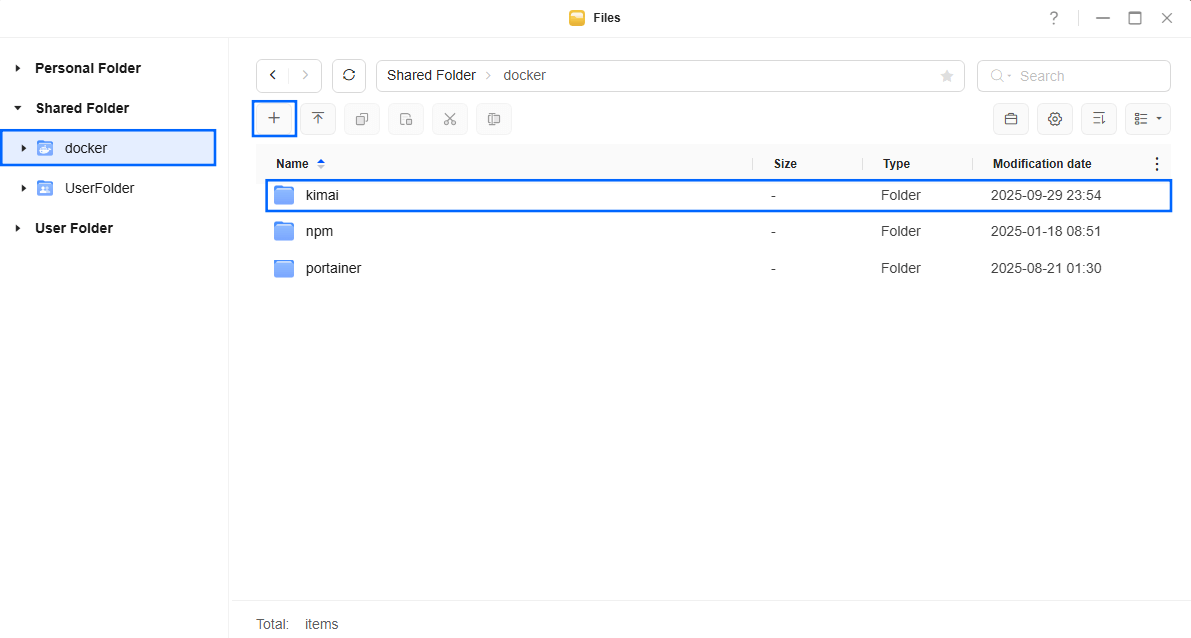
STEP 6
Now create two new folders inside the kimai folder that you have previously created at STEP 5 and name them data and db. Follow the instructions in the image below.
Note: Be careful to enter only lowercase, not uppercase letters.
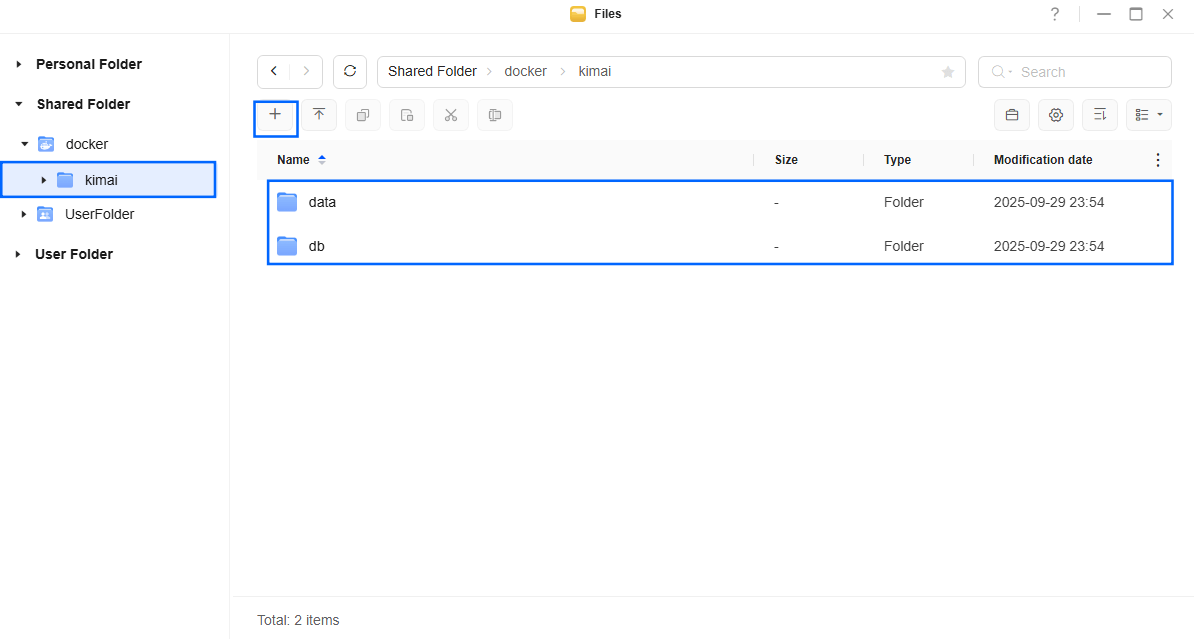
STEP 7
Follow my step by step guide on how to activate SMTP for your Gmail account. This step is mandatory. Note: If you don’t want to use the easiest way for SMTP with Google and you already have SMTP details from your own Mail Server, you can just skip this STEP and use your personalized email SMTP details instead.
STEP 8
Log into Portainer using your username and password. On the left sidebar in Portainer, click on Home then Live connect. Follow the instructions in the image below.
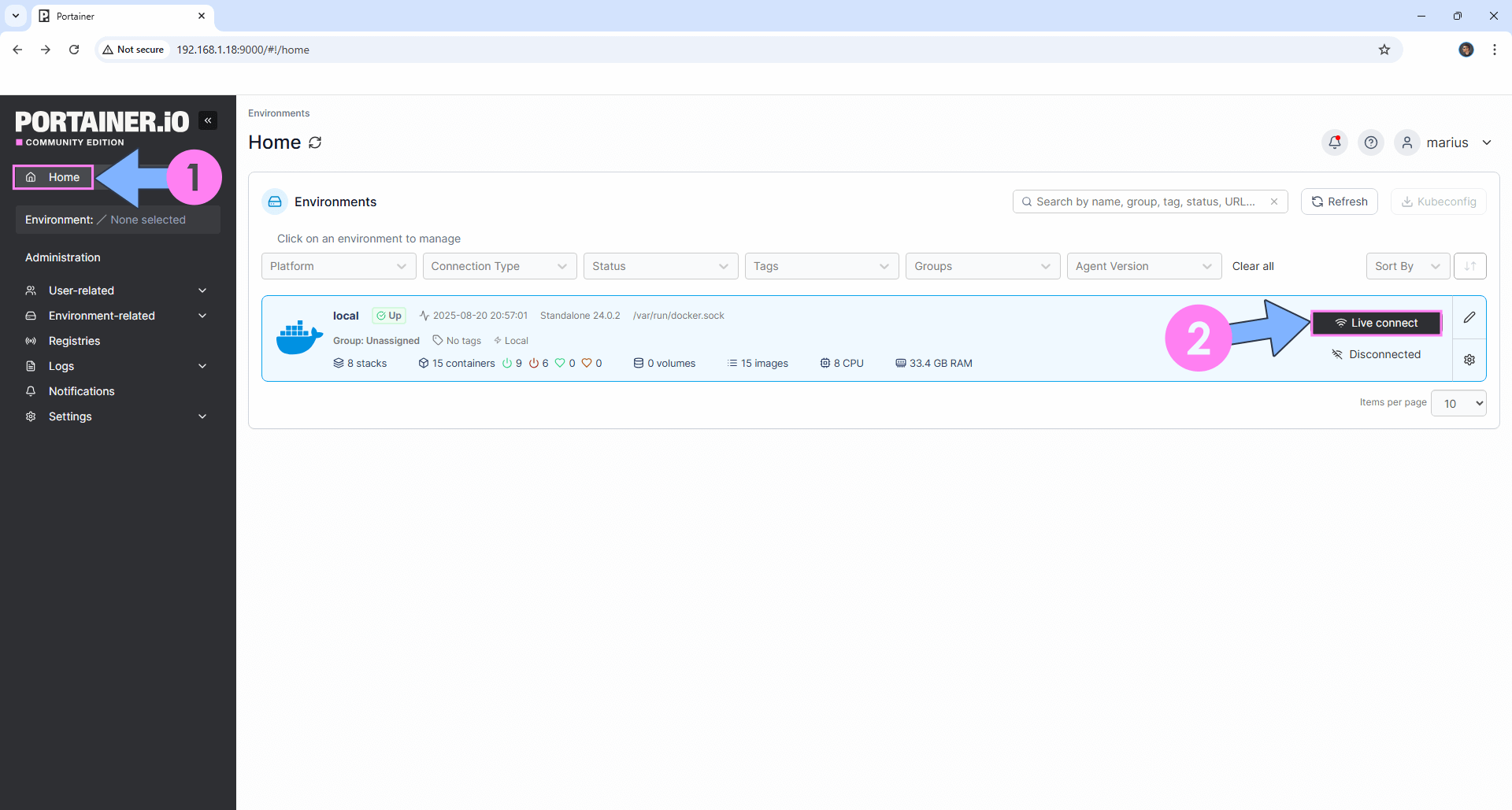
On the left sidebar in Portainer, click on Stacks then + Add stack. Follow the instructions in the image below.
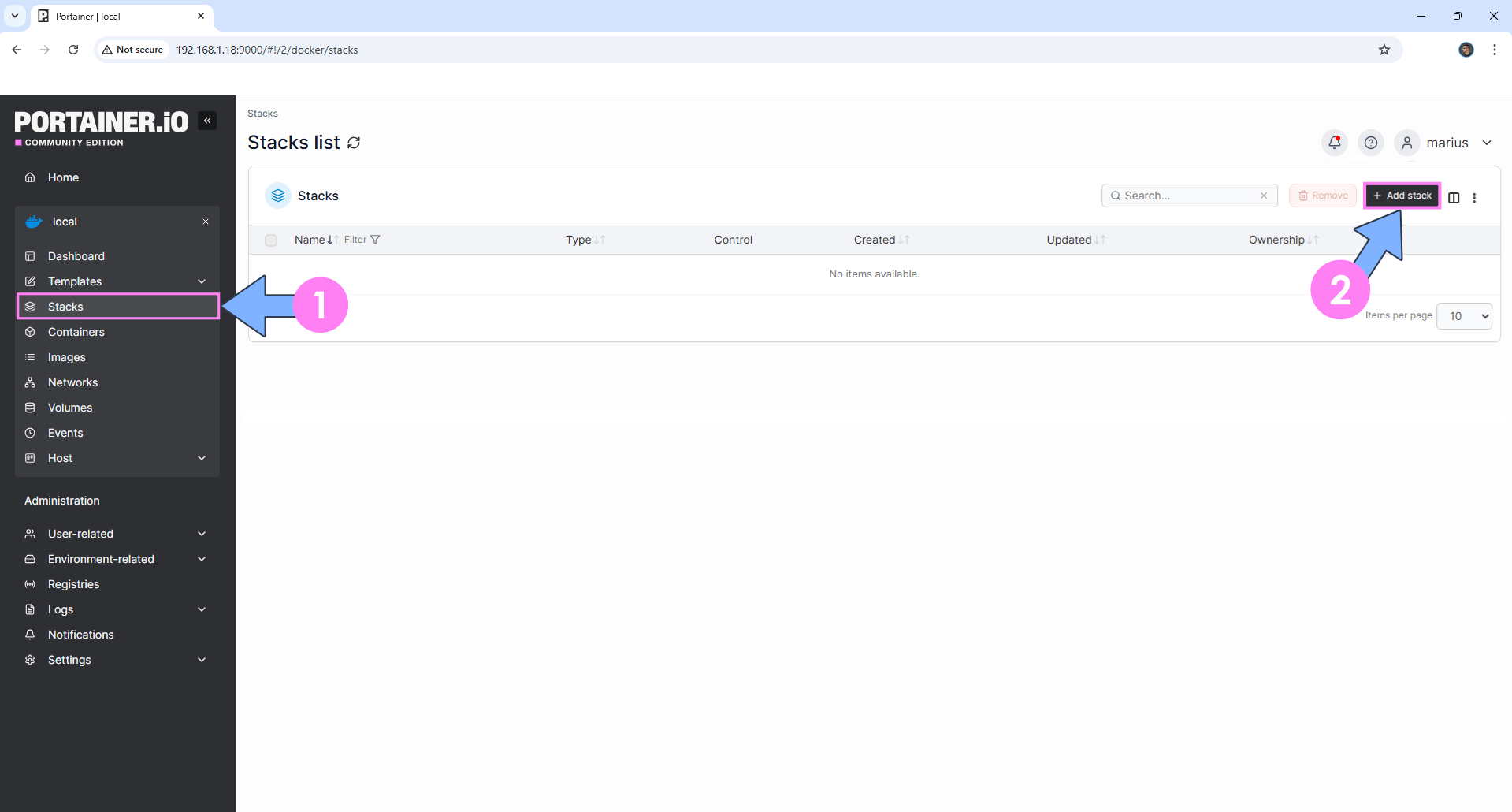
STEP 9
In the Name field type in kimai. Follow the instructions in the image below.
services:
kimai-db:
image: mysql:8
container_name: Kimai-DB
hostname: kimai-db
security_opt:
- no-new-privileges:true
healthcheck:
test: mysqladmin -p$$MYSQL_ROOT_PASSWORD ping -h localhost
interval: 20s
start_period: 10s
timeout: 10s
retries: 3
environment:
- PUID=1026
- PGID=100
- TZ=Europe/Bucharest
- MYSQL_ROOT_PASSWORD=superpassword
- MYSQL_DATABASE=kimai
- MYSQL_USER=kimaiuser
- MYSQL_PASSWORD=kimaipass
volumes:
- /volume1/docker/kimai/db:/var/lib/mysql:rw
restart: on-failure:5
kimai:
image: kimai/kimai2:apache
container_name: Kimai
volumes:
- /volume1/docker/kimai/data:/opt/kimai/var:rw
ports:
- 9805:8001
environment:
- APP_SECRET=dOxZYTTZgXKMHkqLBIQVImayQXAVWdzGBPuFJKggzcgvgPJPXpWzqzKaUOIOGGIr
- NODE_ENV=prod
- DATABASE_URL=mysql://kimaiuser:kimaipass@kimai-db/kimai?charset=utf8&serverVersion=8
- ADMINMAIL=yourown@email
- ADMINPASS=mariushosting
- MAILER_FROM=yourownGmailaddress
- MAILER_URL=smtp://yourownGmailaddress:appassword@smtp.gmail.com:587?encryption=tls&auth_mode=plain
restart: on-failure:5
Note: Before you paste the code above in the Web editor area below, change the value numbers for PUID and PGID with your own values. (Follow my step by step guide on how to do this.)
Note: Before you paste the code above in the Web editor area below, change the value for TZ. (Select your current Time Zone from this list.)
Note: Before you paste the code above in the Web editor area below, change the value for APP_SECRET. (Generate your own Random 64 length APP_SECRET.)
Note: Before you paste the code above in the Web editor area below, change the value for ADMINMAIL and type in your own email. You will need this email later at STEP 19.
Note: Before you paste the code above in the Web editor area below, change the value for ADMINPASS and type in your own password. You will need this password later at STEP 19. Note: Do NOT use special characters for password.
Note: On the MAILER_URL area, type in your own Gmail address. STEP 8.
Note: On the MAILER_URL area, type in your own Gmail App Password. STEP 8.
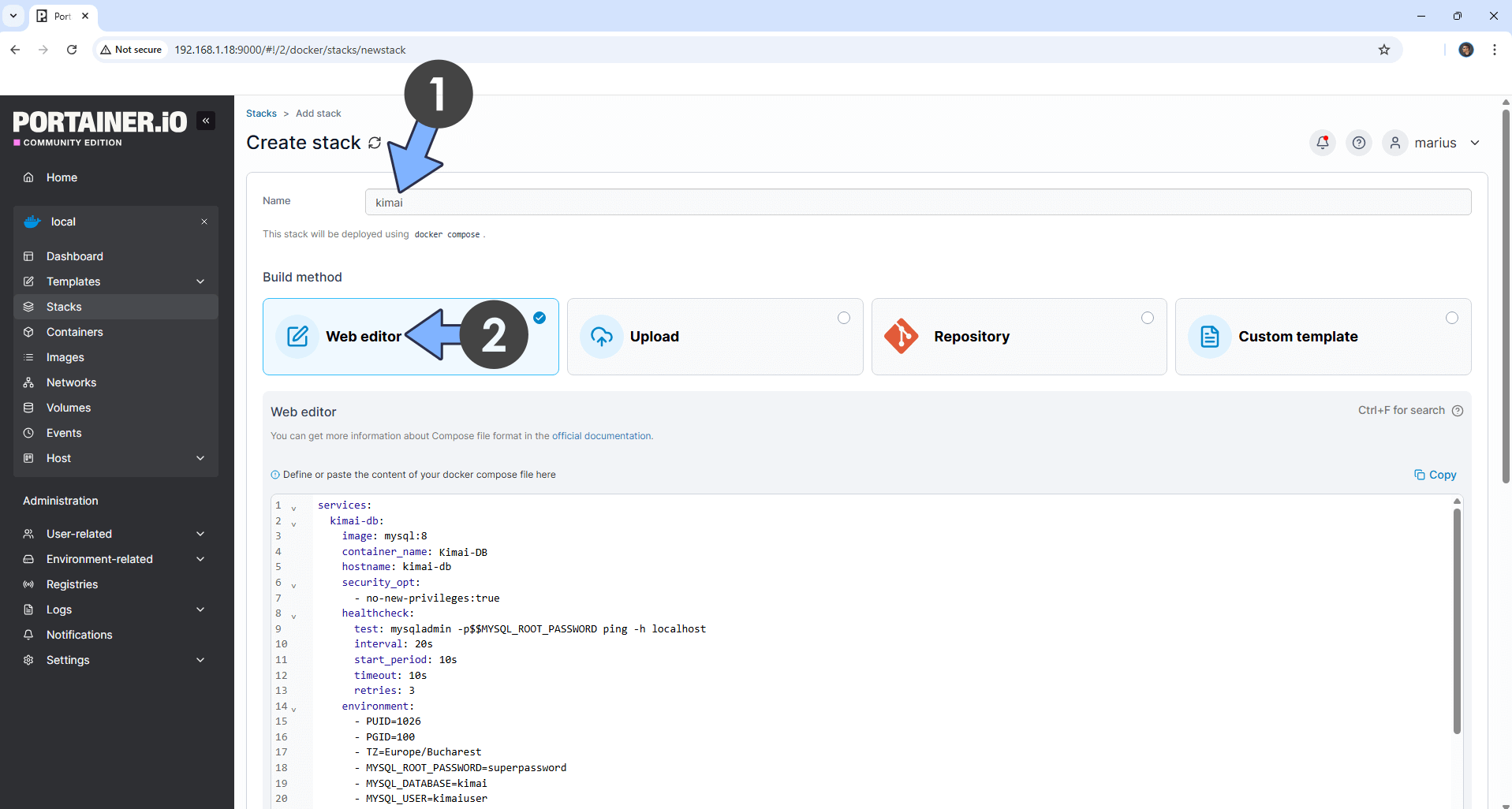
STEP 10
Scroll down on the page until you see a button named Deploy the stack. Click on it. Follow the instructions in the image below. The installation process can take up to a few minutes. It will depend on your Internet speed connection.
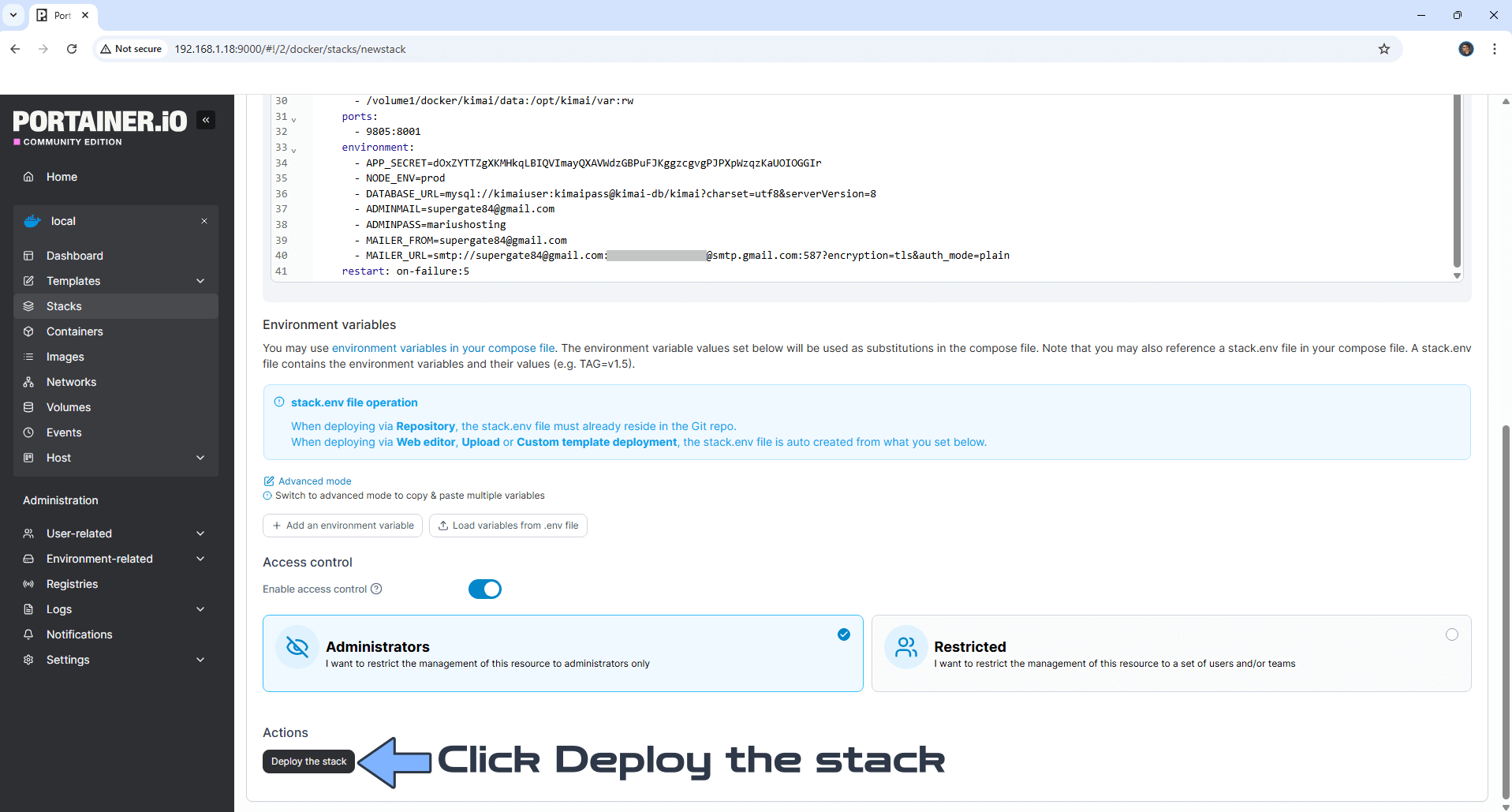
STEP 11
If everything goes right, you will see the following message at the top right of your screen: “Success Stack successfully deployed“.
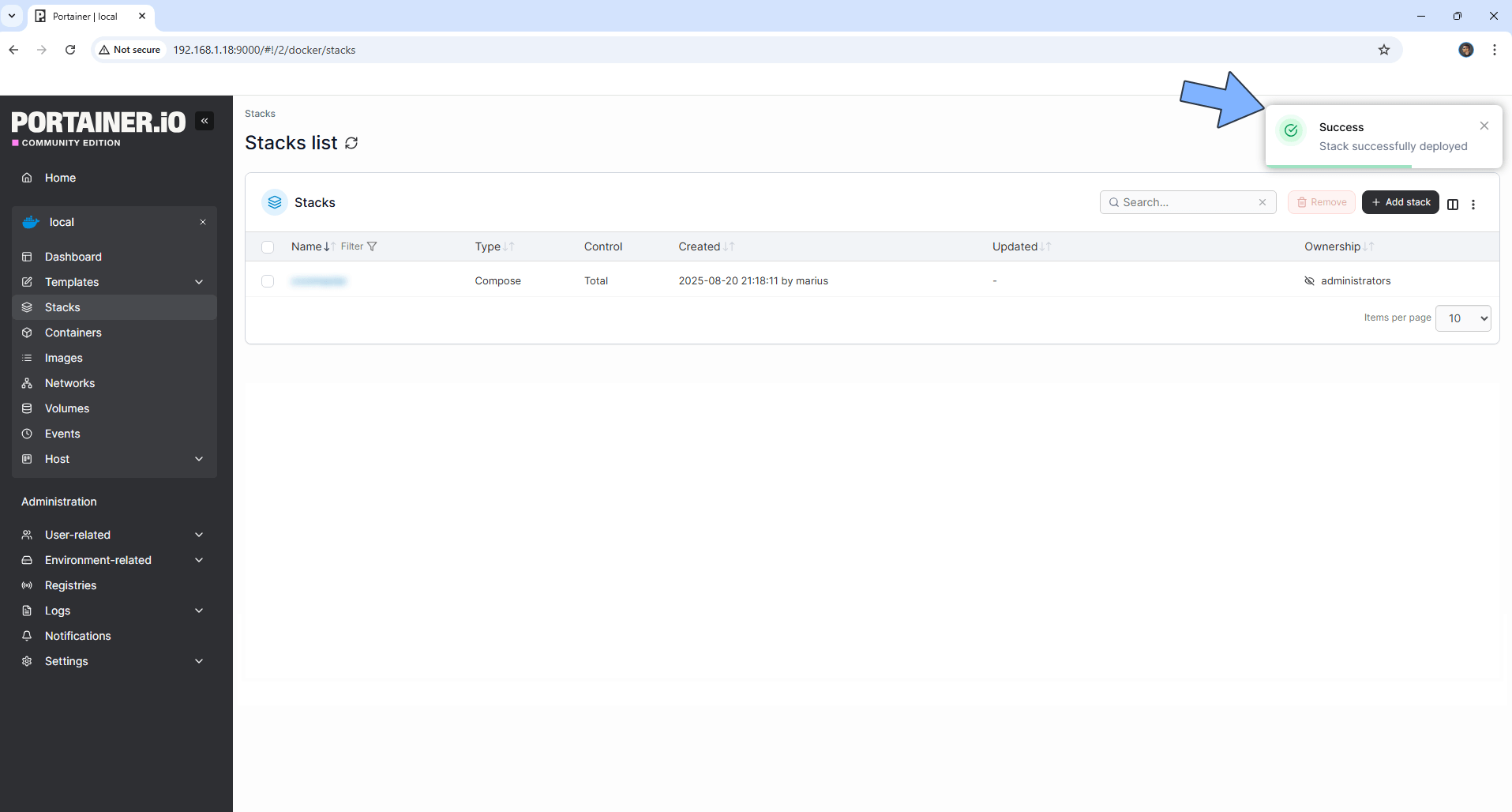
STEP 12
Open your Nginx Proxy Manager container that you have previously installed at STEP 3. Click Add Proxy Host. A new pop up window will open. Add the following details:
Domain Names: Type in your own noip domain name that you have previously created at STEP 4.
Scheme: http
Forward Hostname/IP: Type in the local NAS IP of your UGREEN NAS.
Forward Port: Type in the Kimai local Port that is 9805
Check Block Common Exploits
Check Websockets Support
Click the SSL tab. Follow the instructions in the image below.
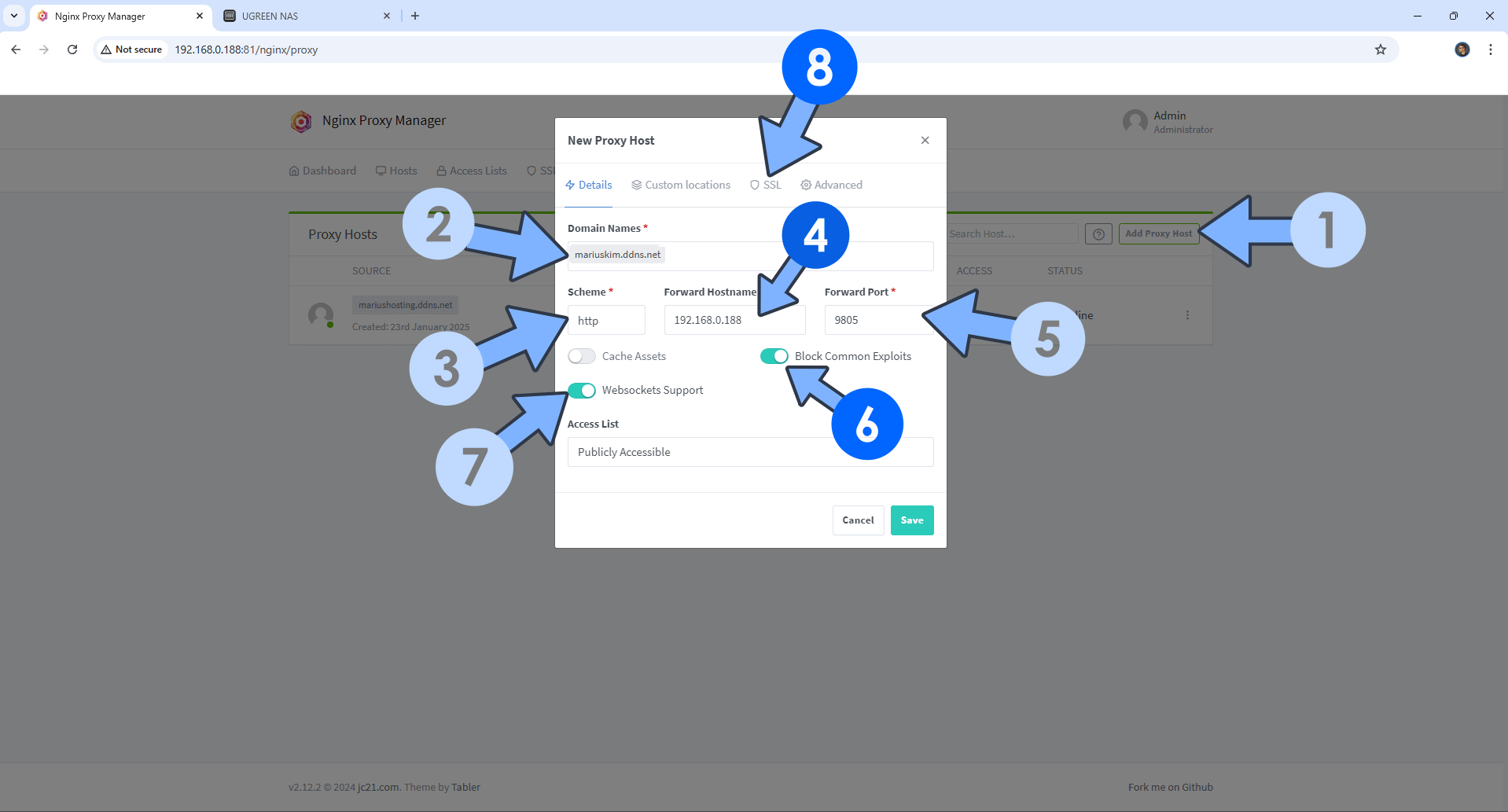
STEP 13
After you click the SSL tab, add the following details:
SSL Certificate: Request a new SSL Certificate
Check: Force SSL
Check: HSTS Enabled
Check: HTTP/2 Support
Click Save. Follow the instructions in the image below.
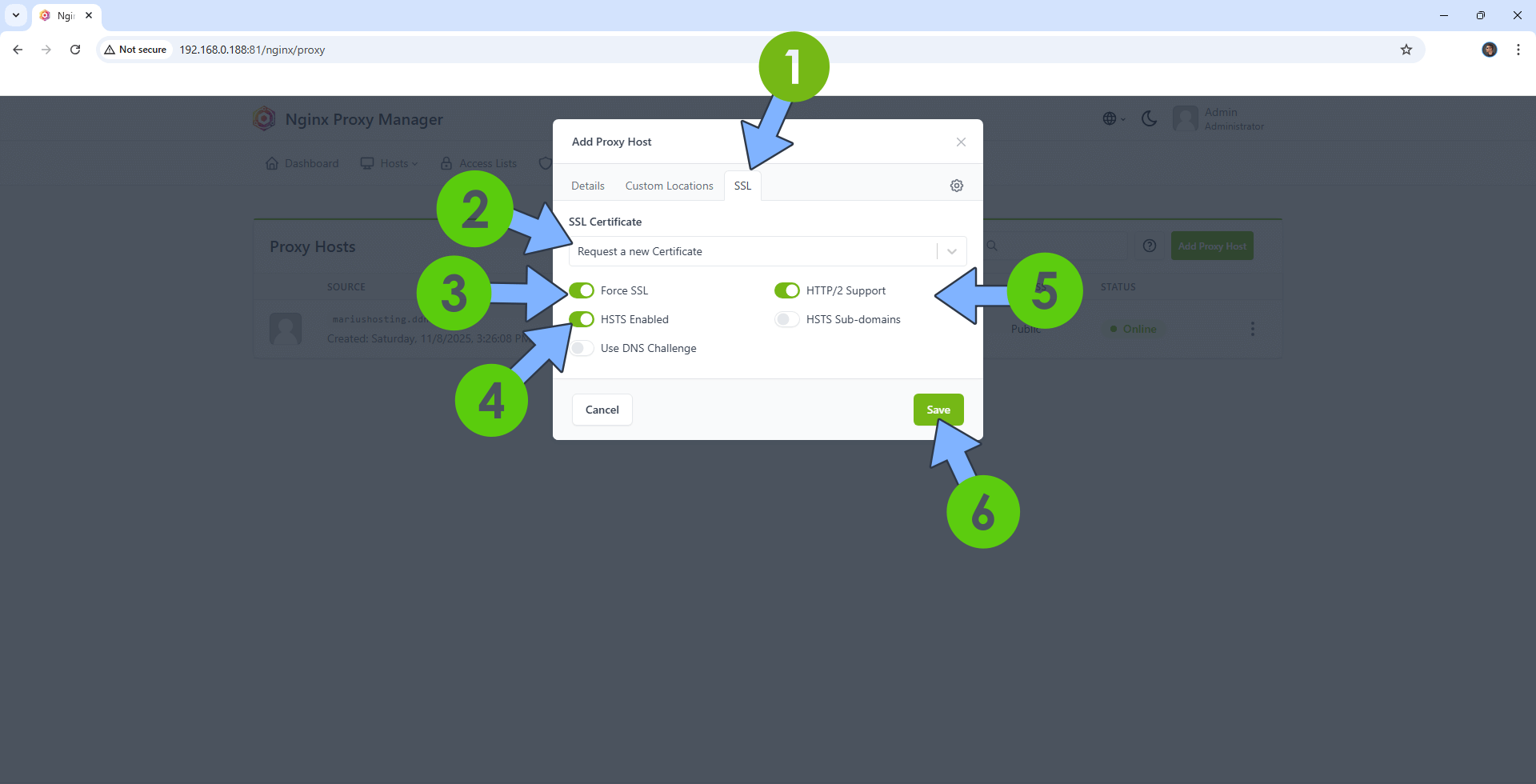
STEP 14
In the Proxy Hosts area, if everything goes right, you will see that your kimai hostname has been generated. Click on it. Follow the instructions in the image below.
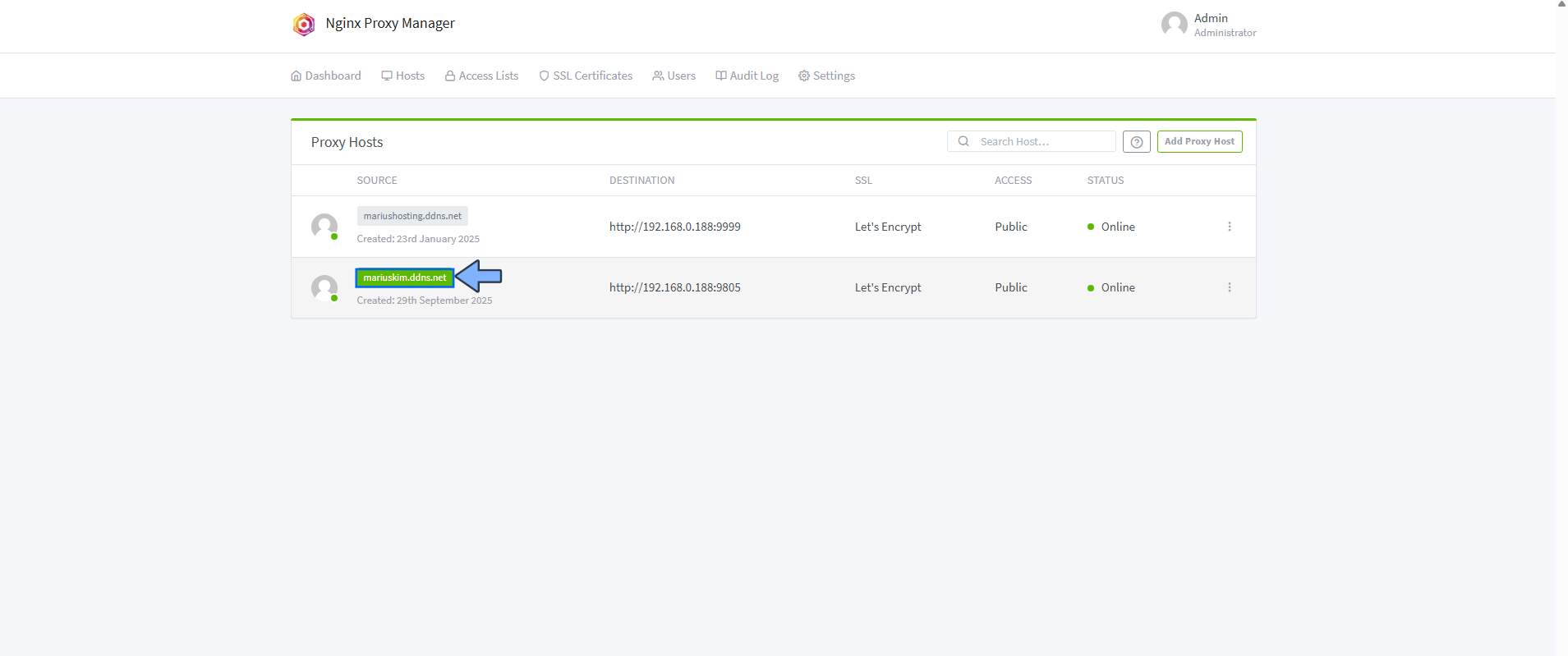
STEP 15
🟢Please Support My work by Making a Donation. Almost 99,9% of the people that install something using my guides forget to support my work, or just ignore STEP 1. I’ve been very honest about this aspect of my work since the beginning: I don’t run any ADS, I don’t require subscriptions, paid or otherwise, I don’t collect IPs, emails, and I don’t have any referral links from Amazon or other merchants. I also don’t have any POP-UPs or COOKIES. I have repeatedly been told over the years how much I have contributed to the community. It’s something I love doing and have been honest about my passion since the beginning. But I also Need The Community to Support me Back to be able to continue doing this work.
STEP 16
Your Kimai instance will be orange with the Unhealthy State. The State will turn Healthy in approximately 5 minutes which is how long the Kimai installations takes. Refresh the browser page from time to time until you see the State turn green.
STEP 17
Now open your browser and type in your HTTPS/SSL certificate like this https://kimai.ddns.net In my case it’s https://mariuskim.ddns.net If everything goes right, you will see the main Kimai login page. Type in your own Username (ADMINMAIL) and Password (ADMINPASS) that you have previously created at STEP 9. Click Log in. Follow the instructions in the image below.
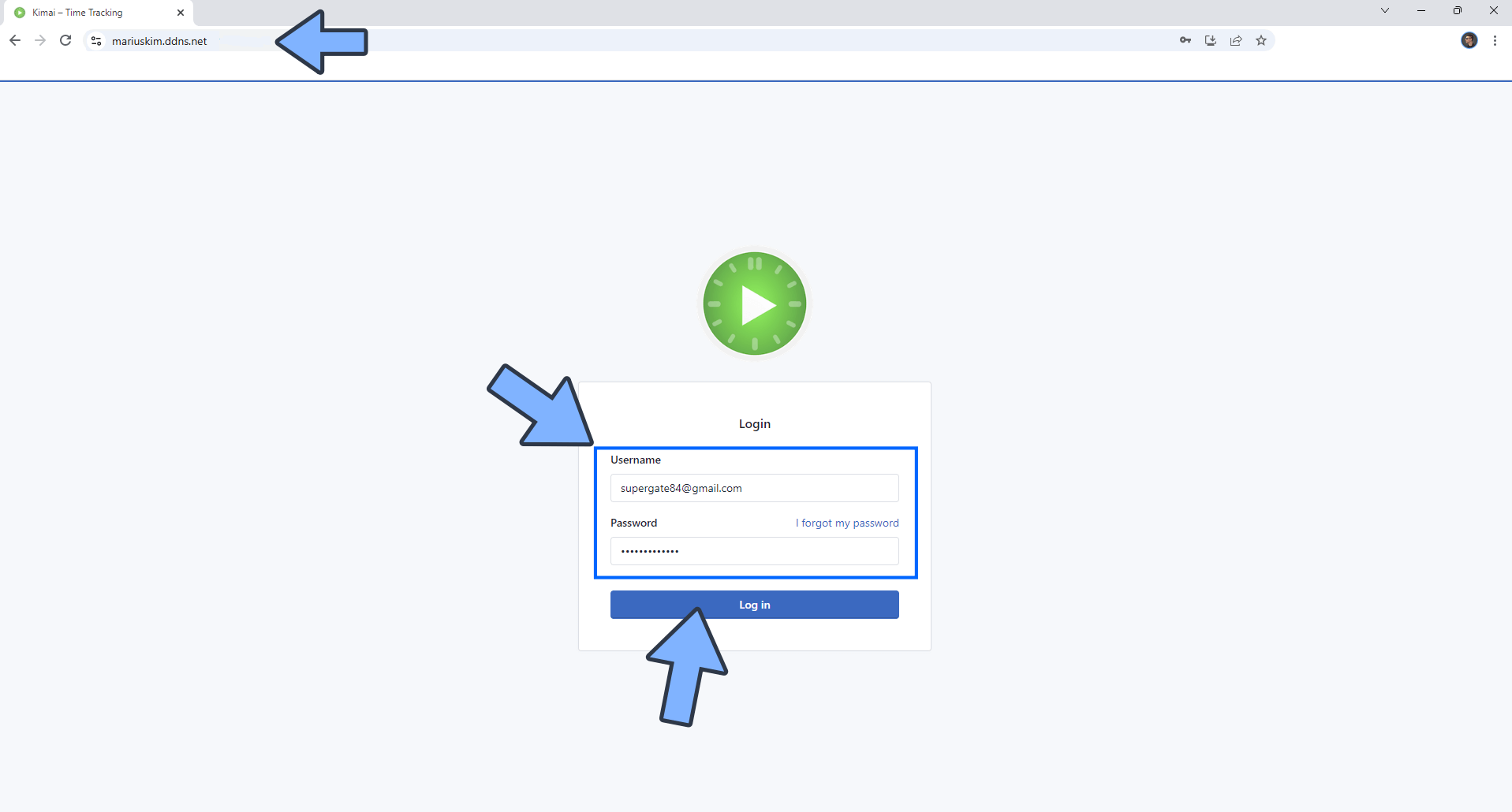
STEP 18
Click Next. Follow the instructions in the image below.
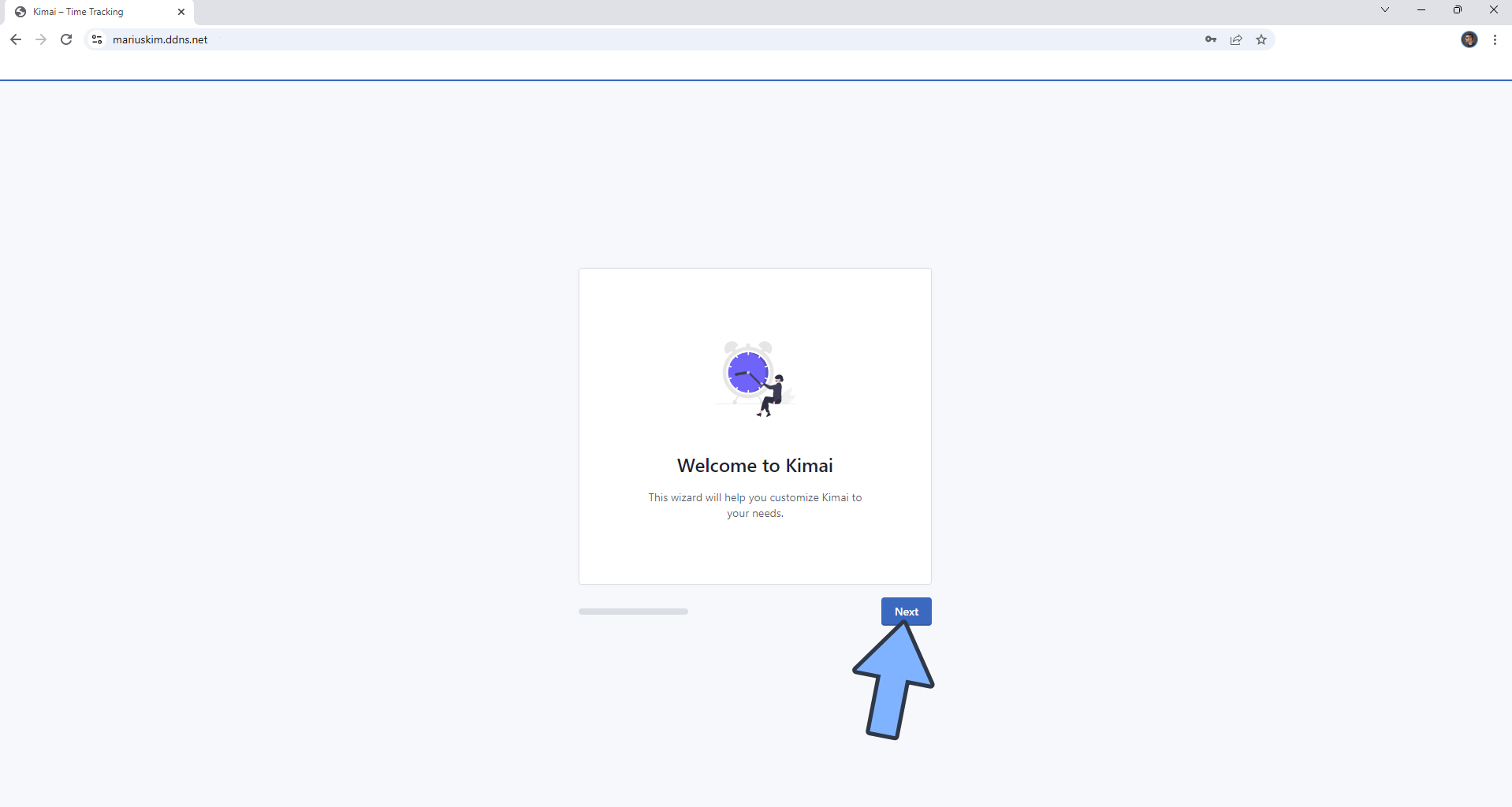
STEP 19
Choose your Language, Time, Timezone and Theme then click Next. Follow the instructions in the image below.
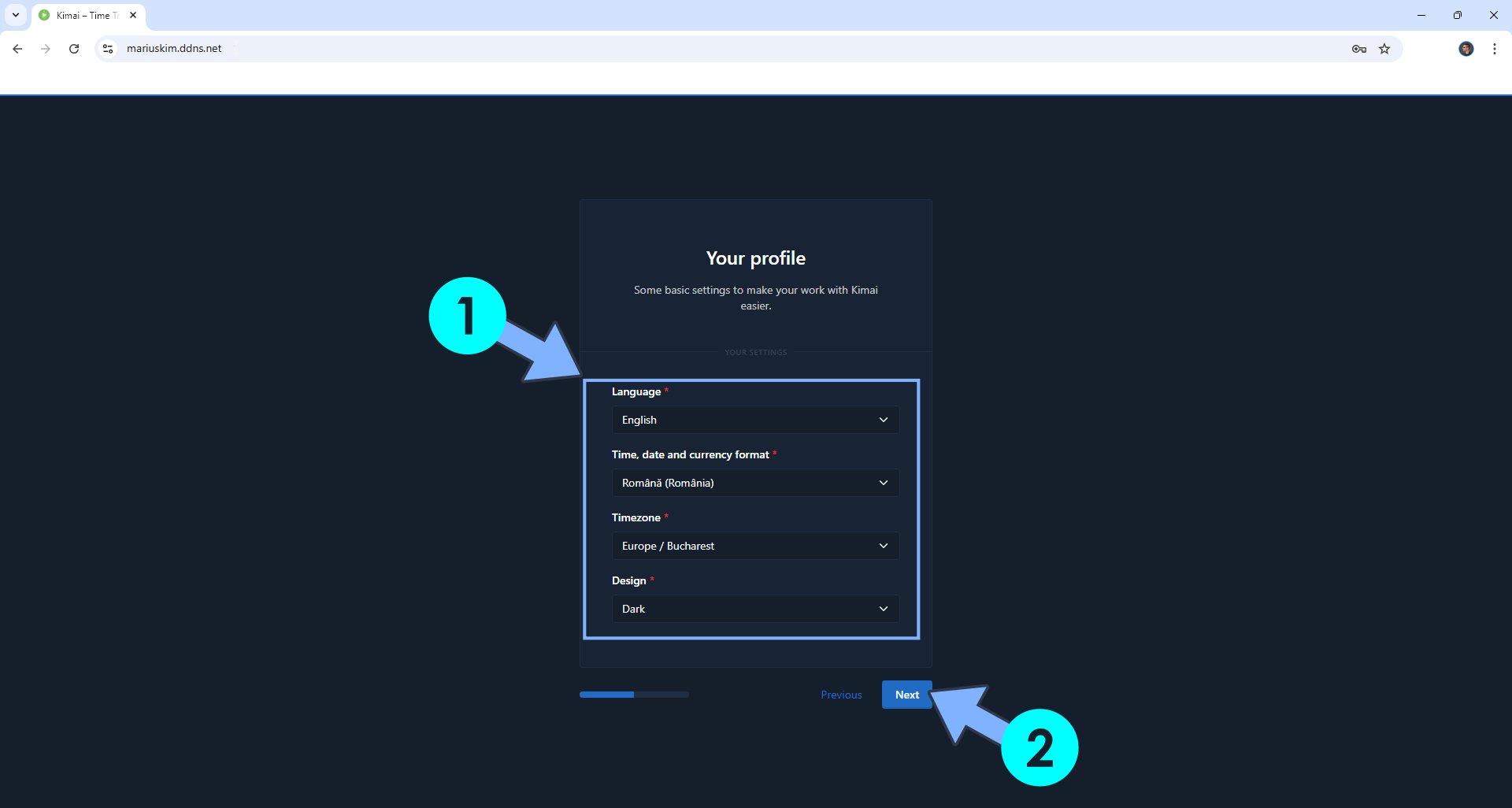
STEP 20
Click Next. Follow the instructions in the image below.
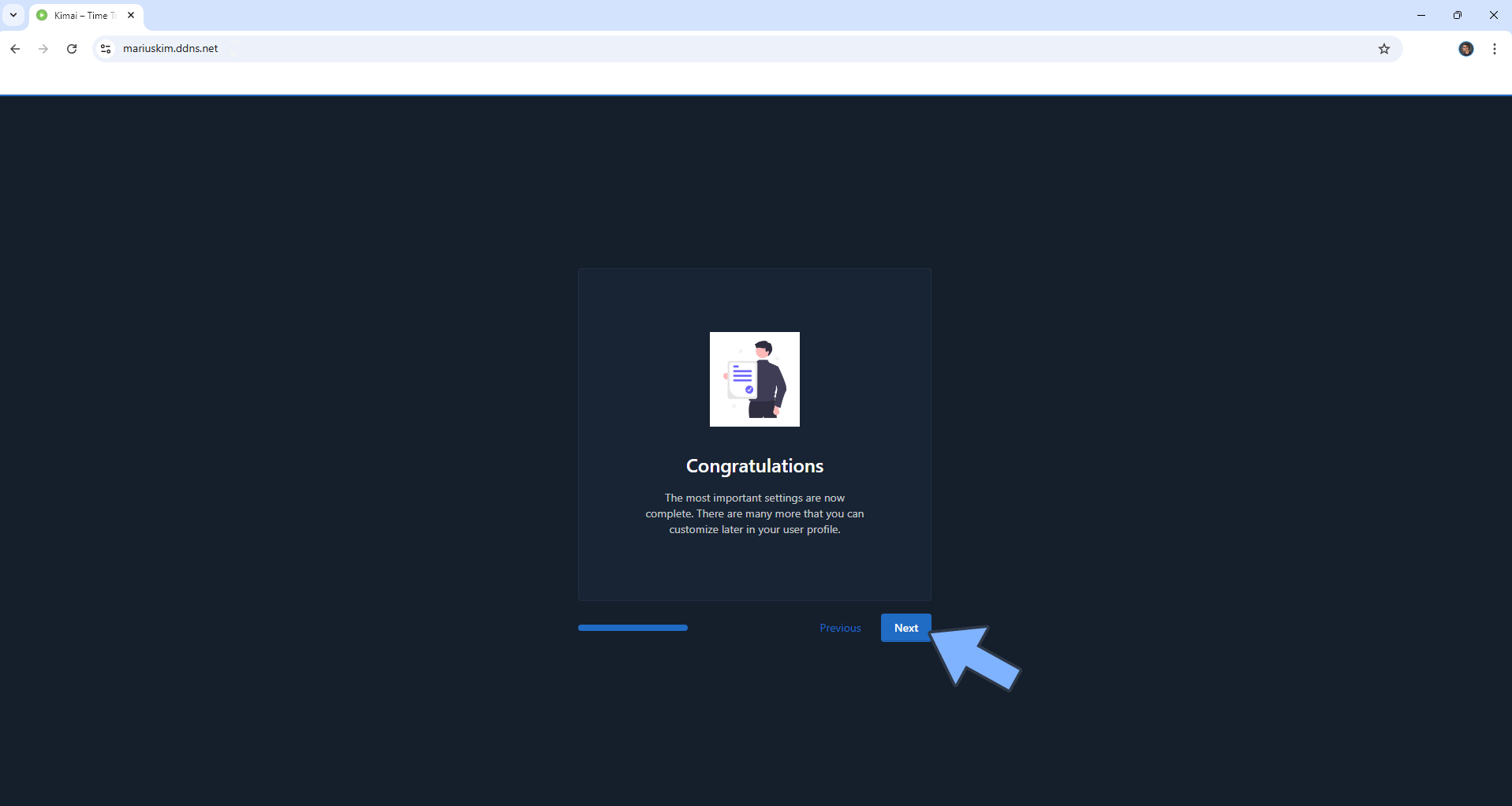
STEP 21
Your Kimai Dashboard at a glance!
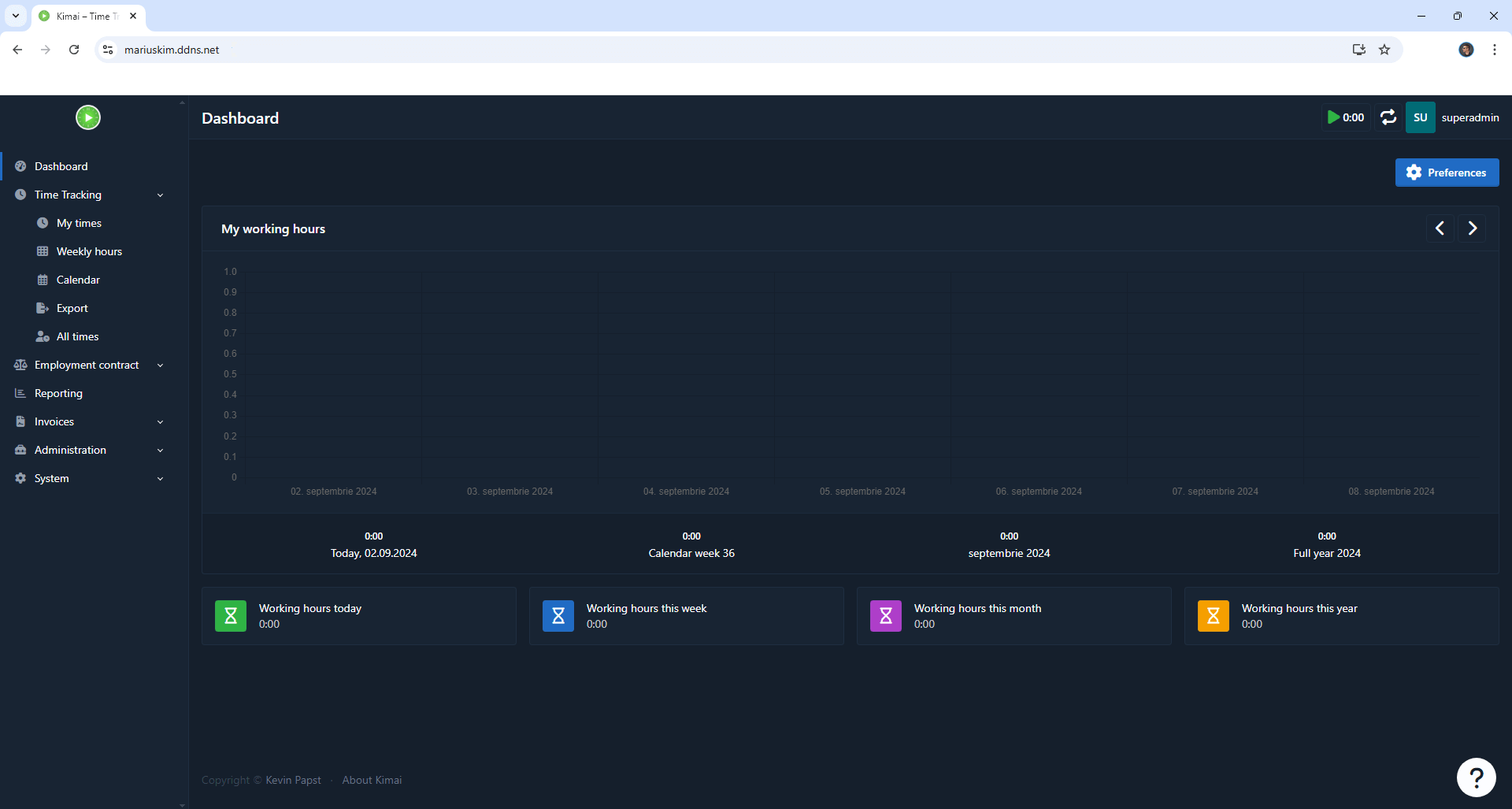
Enjoy Kimai!
🆙Note/Update/Container: How to Update Your Docker Containers on UGREEN NAS Using Portainer.
🐳Note: How to Create Docker Shortcuts on Desktop.
🆕Note: How to Update Portainer to the latest version.
🆕Note: How to Clean Docker.
This post was updated on Saturday / December 6th, 2025 at 3:40 AM
